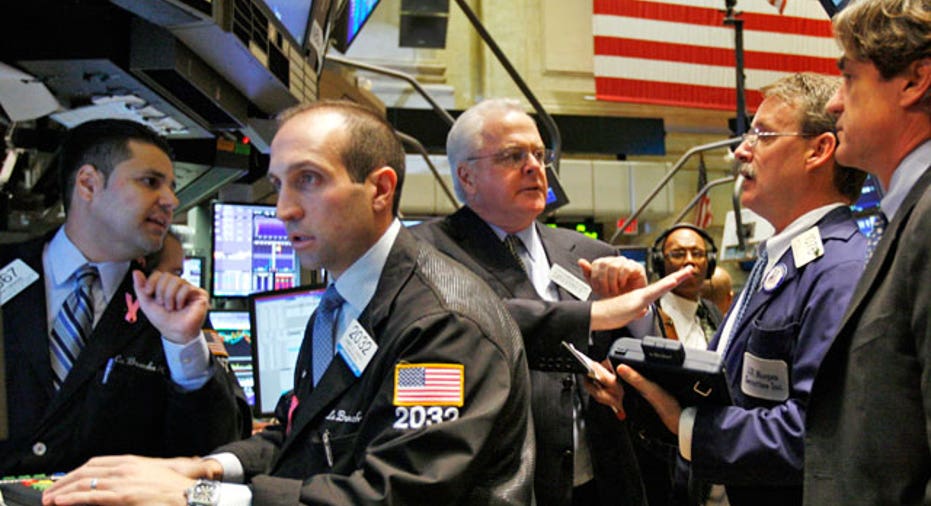Is Inflation Coming? Markets Say Yes, Data Says No

Traders are at odds with consumers when it comes to the inflation outlook, a divergence that some investors are betting will lead to a sharp market reversal.
A University of Michigan survey of consumer expectations for annual inflation over the next five to 10 years hit 2.3% for December, data showed Friday. That is down from 2.6% in June and the lowest reading in records that go back to the late 1970s.
Bond market-derived gauges that seek to project consumer price increases over a similar period have been rising. The five-year, five-year forward break-even rate, which tracks the yield differential between nominal and inflation-protected Treasurys to show where inflation will be in the five years that begin five years from now, was at 2.03% on Friday, according to FTN Financial. That is well above its reading of 1.49% six months ago, suggesting that certainty around inflation is building.
The divergence in the inflation trends is important because investors have been betting that prices will pick up when President-elect Donald Trump takes office next month, reflecting administration plans to cut taxes, roll back regulations and spend on infrastructure. That outlook has pushed benchmark Treasury yields to multiyear highs, indicating lower prices, while underlying a run to records in major U.S. stock indexes.
But some worry that the vulnerability of this so-called reflation trade is exposed by the latest sign consumers don't share that outlook.
"The markets have the wrong narrative" on inflation, said David Rosenberg, chief investment strategist at Gluskin Sheff & Associates Inc., a vocal proponent of the lower-for-longer camp on interest rates when many others on Wall Street have deserted.
Mr. Rosenberg said the base effects from higher energy prices would give inflation a short-term boost during early 2017, but that inflation is likely to slow again later in the year.
"Anyone who thinks one man can reverse on his own the structural forces that led to the multiyear disinflation trend -- and I'm talking about excessive debt, globalization, aging demographics and technology -- needs to go back to economics school right away," he said.
Others also are skeptical of the inflation trade. David Kotok, chief investment officer at Cumberland Advisors, said his firm, which manages nearly $2.7 billion, has been buying "millions" of dollars worth of hard-hit tax-free municipal bonds, some of which have been offering yields as high as 4% and come with top-notch AA ratings.
"The markets which are priced in spreads from Treasurys went too far, too fast," he said.
The inflation outlook carries implications for monetary policy as well, because the Federal Reserve wants to see stable, rising prices before it lifts rates much higher. Climbing prices are thought to be one hallmark of a healthy economy.
The Fed has had trouble getting inflation to its 2% annual target in recent years. The central bank's preferred gauge of inflation, the personal-consumption expenditures price index, was up 1.4% in November from a year earlier, data showed Thursday. Another measure, the consumer-price index, was up 1.7% from a year earlier in November.
Still, money has continued to flock to U.S. bond funds and exchange-traded funds that target Treasury inflation-protected securities, betting that inflation will reach or exceed the central bank's target. The sector attracted $341.5 million net cash for the week that ended Wednesday, boosting year-to-date net inflows to $11.6 billion, according to fund tracker Lipper. The sector is headed for the biggest annual net inflow since 2009.
TIPS increase their payout to holders if the consumer-price index exceeds certain thresholds. Nominal Treasury bonds' payouts aren't adjusted for inflation, which chips away fixed returns on bonds over time.
Market-based inflation expectations can be volatile. When money managers brace for inflation to move slightly higher, rather than slightly lower, their purchases of TIPS can disproportionately drive up inflation expectations. That has made it difficult to bet against a trade that appears to have momentum behind it.
Fed Chairwoman Janet Yellen said this month that there are signs wage inflation is picking up. Yet the nonfarm jobs report this month showed average hourly earnings for private-sector workers declined 0.1% in November. Earnings were up 2.5% from a year earlier, down from October's 2.8%, which was the strongest annual wage growth since June 2009.
One other factor that may contain the risk of inflation is the U.S. dollar, which rose to a 14-year high against a basket of its main rivals earlier this week. A higher dollar reduces the cost of imported goods that may keep a lid on inflation, potentially delaying the Fed's goal to push up inflation to its 2% target.



















